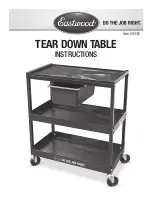
110
IBM Midrange System Storage Hardware Guide
RAID reliability considerations
At first glance, both RAID 3 and RAID 5 appear to provide excellent protection against drive
failure. With today’s high-reliability drives, it would appear unlikely that a second drive in an
array would fail (causing data loss) before an initial failed drive could be replaced.
However, field experience has shown that when a RAID 3 or RAID 5 array fails, it is not
usually due to two drives in the array experiencing complete failure. Instead, most failures are
caused by one drive going bad, and a single block somewhere else in the array that cannot be
read reliably.
This problem is exacerbated by using large arrays with RAID 5. This
stripe kill
can lead to
data loss when the information to rebuild the stripe is not available. The end effect of this
issue will depend on the type of data and how sensitive it is to corruption. While most storage
subsystems (including the DS5000 storage subsystem) have mechanisms in place to try to
prevent this from happening, they cannot work 100% of the time.
Any selection of RAID type should take into account the cost of downtime. Simple math tells
us that RAID 3 and RAID 5 are going to suffer from failures more often than RAID 10. (Exactly
how often is subject to many variables and is beyond the scope of this book.) The money
saved by economizing on drives can be easily overwhelmed by the business cost of a crucial
application going down until it can be restored from backup.
Naturally, no data protection method is 100% reliable, and even if RAID were faultless, it
would not protect your data from accidental corruption or deletion by program error or
operator error. Therefore, all crucial data should be backed up by the appropriate software,
according to business needs.
3
Drives operate
independently with
data blocks
distributed among all
drives. Parity is
written to a dedicated
drive.
Mbps
High performance for
large, sequentially
accessed files (image,
video, and graphics).
Degraded
performance with 8-9
I/O threads, random
IOPS, and smaller,
more numerous
IOPS.
5
Drives operate
independently with
data and parity blocks
distributed across all
drives in the group.
IOPS
Mbps
Good for reads, small
IOPS, many concurrent
IOPS, and random I/Os.
Best for sequential
writes, throughput
intensive applications.
Best option for mixed
workload and space
efficiency.
Random writes are
particularly
demanding.
6
Stripes blocks of data
and parity across an
array of drives and
calculates two sets of
parity information for
each block of data.
IOPS
Mbps
Good for multi-user
environments, such as
database or file system
storage, where typical
I/O size is small, and in
situations where
additional fault
tolerance than RAID 5
is required.
Slower in random
writing data, complex
RAID controller
architecture.
RAID
Description
Application
Advantage
Disadvantage
Содержание System Storage DS4000
Страница 2: ......
Страница 18: ...xvi IBM Midrange System Storage Hardware Guide...
Страница 40: ...22 IBM Midrange System Storage Hardware Guide...
Страница 302: ...284 IBM Midrange System Storage Hardware Guide...
Страница 344: ...326 IBM Midrange System Storage Hardware Guide...
Страница 372: ...354 IBM Midrange System Storage Hardware Guide Figure 7 25 Drive firmware Incompatible...
Страница 490: ...472 IBM Midrange System Storage Hardware Guide...
Страница 522: ...504 IBM Midrange System Storage Hardware Guide...
Страница 544: ...526 IBM Midrange System Storage Hardware Guide...
Страница 561: ...Index 543 Z zoning 129 130...
Страница 562: ...544 IBM Midrange System Storage Hardware Guide...
Страница 564: ...IBM Midrange System Storage Hardware Guide IBM Midrange System Storage Hardware Guide...
Страница 565: ......
















































